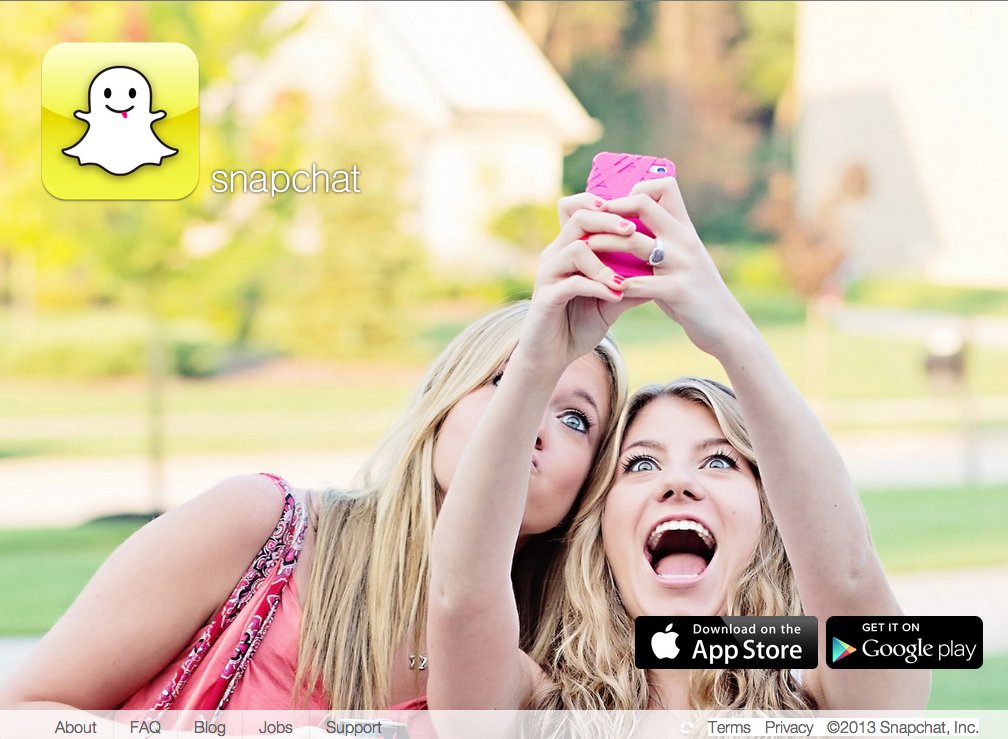Why Snapchat is Valuable: It’s All About Attention
danah boyd | apophenia 2014-03-21
 Most people who encounter a link to this post will never read beyond this paragraph. Heck, most people who encountered a link to this post didn’t click on the link to begin with. They simply saw the headline, took note that someone over 30 thinks that maybe Snapchat is important, and moved onto the next item in their Facebook/Twitter/RSS/you-name-it stream of media. And even if they did read it, I’ll never know it because they won’t comment or retweet or favorite this in any way.
Most people who encounter a link to this post will never read beyond this paragraph. Heck, most people who encountered a link to this post didn’t click on the link to begin with. They simply saw the headline, took note that someone over 30 thinks that maybe Snapchat is important, and moved onto the next item in their Facebook/Twitter/RSS/you-name-it stream of media. And even if they did read it, I’ll never know it because they won’t comment or retweet or favorite this in any way.
We’ve all gotten used to wading in streams of social media content. Open up Instagram or Secret on your phone and you’ll flick on through the posts in your stream, looking for a piece of content that’ll catch your eye. Maybe you don’t even bother looking at the raw stream on Twitter. You don’t have to because countless curatorial services like digg are available to tell you what was most important in your network. Facebook doesn’t even bother letting you see your raw stream; their algorithms determine what you get access to in the first place (unless, of course, someone pays to make sure their friends see their content).
Snapchat offers a different proposition. Everyone gets hung up on how the disappearance of images may (or may not) afford a new kind of privacy. Adults fret about how teens might be using this affordance to share inappropriate (read: sexy) pictures, projecting their own bad habits onto youth. But this is isn’t what makes Snapchat utterly intriguing. What makes Snapchat matter has to do with how it treats attention.
When someone sends you an image/video via Snapchat, they choose how long you get to view the image/video. The underlying message is simple: You’ve got 7 seconds. PAY ATTENTION. And when people do choose to open a Snap, they actually stop what they’re doing and look.
In a digital world where everyone’s flicking through headshots, images, and text without processing any of it, Snapchat asks you to stand still and pay attention to the gift that someone in your network just gave you. As a result, I watch teens choose not to open a Snap the moment they get it because they want to wait for the moment when they can appreciate whatever is behind that closed door. And when they do, I watch them tune out everything else and just concentrate on what’s in front of them. Rather than serving as yet-another distraction, Snapchat invites focus.
Furthermore, in an ecosystem where people “favorite” or “like” content that is inherently unlikeable just to acknowledge that they’ve consumed it, Snapchat simply notifies the creator when the receiver opens it up. This is such a subtle but beautiful way of embedding recognition into the system. Sometimes, a direct response is necessary. Sometimes, we need nothing more than a simple nod, a way of signaling acknowledgement. And that’s precisely why the small little “opened” note will bring a smile to someone’s face even if the recipient never said a word.
Snapchat is a reminder that constraints have a social purpose, that there is beauty in simplicity, and that the ephemeral is valuable. There aren’t many services out there that fundamentally question the default logic of social media and, for that, I think that we all need to pay attention to and acknowledge Snapchat’s moves in this ecosystem.
(This post was originally published on LinkedIn. More comments can be found there.)